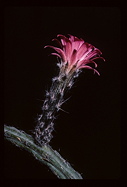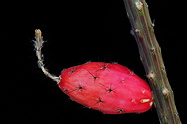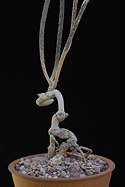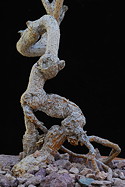Long cultivated under the synonym Wilcoxia viperina, this species shares the slender stems and tuberous roots of some members of that genus. This morphology fits equally well or better with Peniocereus, which typically produces larger tubers and longer sprawling stems, like those of P. viperinus. DNA evidence has clarified the relationship with Peniocereus. In either case the flowers are anomalous, for Wilcoxia (now considered a section of Echinocereus) which has more generalized, bee-pollinated flowers, and for Peniocereus, which mostly have scented white nocturnal flowers pollinated by moths. The bright coral-pink flowers of P. viperinus are hummingbird-pollinated, and perhaps one of those buzzed into our Desert Conservatory when the door was open and pollinated our plants. The alternative is that, under the right conditions, the species is self-fertile. Either way, the formation of fruits was unusual enough that we took the opportunity to grow the seed for this offering. One of our specimens was previously offered as ISI 1123 (in 1979), a rooted cut of a well-documented collection by J Dodson. That specimen may have supplied the pollen. The seed, however, was set on an earlier Huntington accession (19593), which was received with erroneous locality data (Sonora). The species is in fact native to the states of Morelos, Puebla, and Oaxaca in southern Mexico. $6.
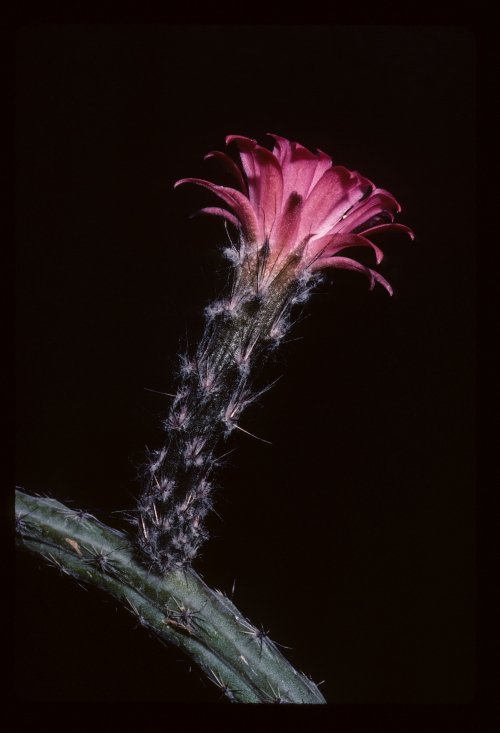
Published in the Cactus and Succulent Journal, Vol. 81 (2), March - April, 2009
